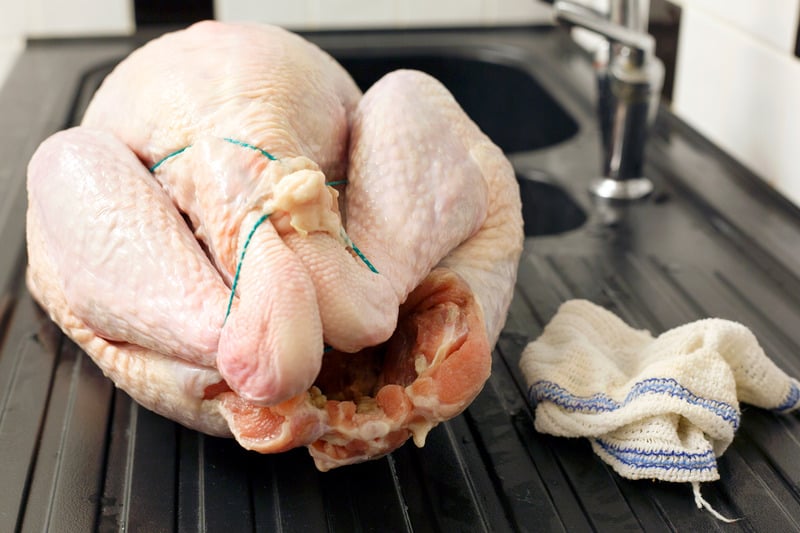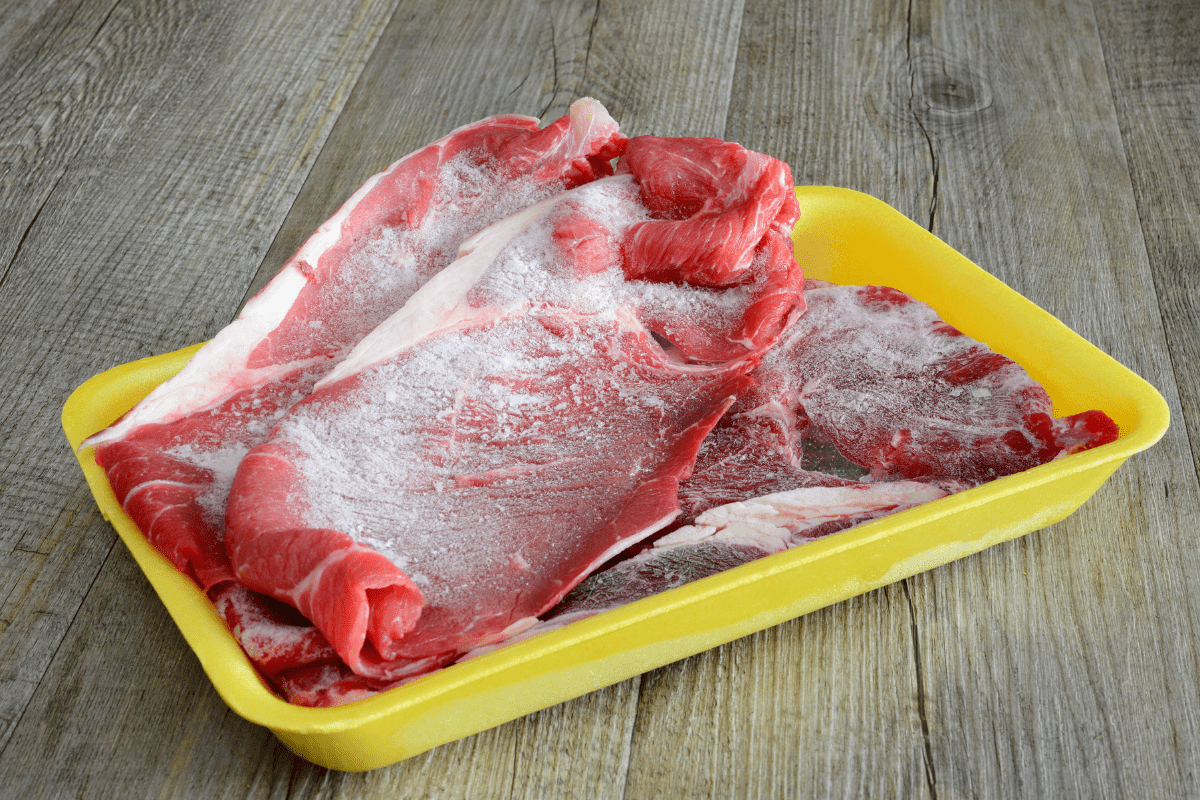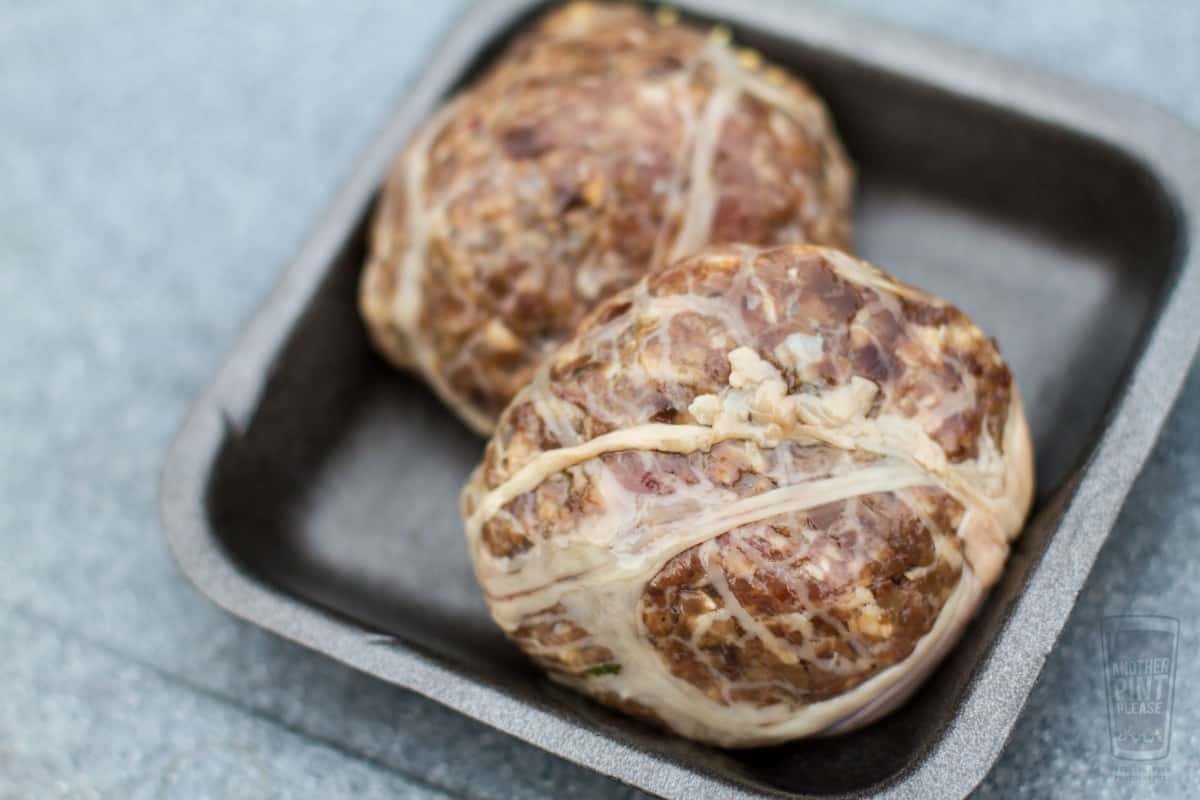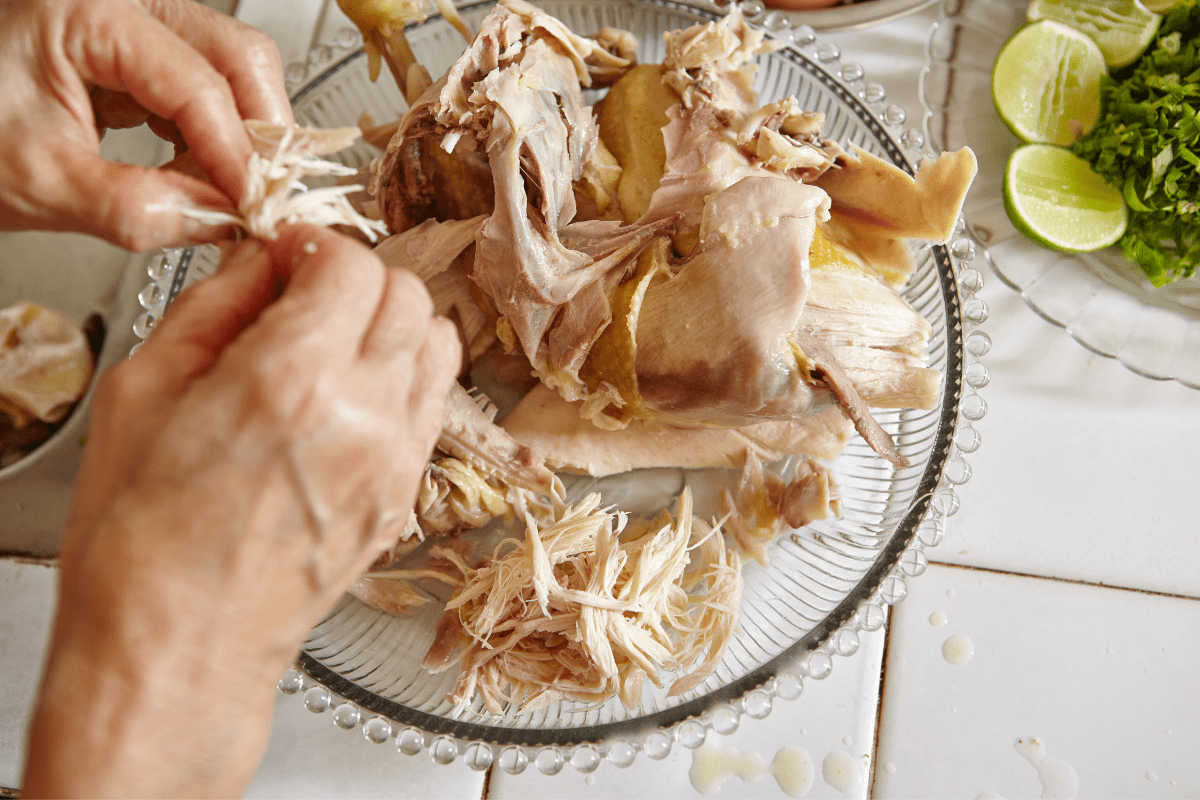Cross contamination is a major factor in the contribution to food borne illness also known as food poisoning.
Taking steps to minimise or eliminate cross contamination within your kitchen will dramatically reduce the chances of you, or someone you serve food to, getting ill.
So what is Cross Contamination? Cross contamination is the term used to decribe the transfer of harmful bacteria, toxins or allergens from one surface to another. By inadveretently spreading the bacteria, toxins or allergens, you may infect ready to eat foods, increasing the risk of food poisoning or allergic reactions to anyone who eats it.
Anyone who cooks food for other people, whether it be a friends dinner party, or as a job within the food industry, has a duty of care to minimise the chances of food poisoning or allergic reactions.
We will now look at how easily cross contamination can occur within the kitchen, and steps you can take to prevent it.
So How Does Cross Contamination Occur?
Cross contamination can happen in seconds and without you even realising it. That is what makes it so dangerous.
Here is a scenario that will briefly explain how cross contamination of bacteria happens:
You are making your evening meal, and tonight you are having roast chicken with a salad.
You go to the refrigerator and remove the chicken. You unwrap the chicken from the packaging, season it and put it in the oven. You throw the packaging in the bin and head to the fridge to get the salad started.
Now let’s look at where cross contamination may have occurred in that scenario.
How Cross Contamination of Bacteria Happens in the Kitchen
When you handled the raw chicken, harmful bacteria will now have been transferred from the chicken to your hands. Cross Contamination has occurred because the bacteria has transferred from one surface to another.
If you didn’t thoroughly wash your hands after they came in contact with the raw chicken, everything you touched after that point will likely have been contaminated with bacteria through cross contamination.
To let that sink in, I will repeat it:
EVERYTHING you touched after handling the raw chicken will potentially have been contaminated with bacteria through cross contamination.
Let’s look at what you may have contaminated during this simple task:
- Did you rinse the chicken under the tap? Bacteria potentially spread wherever the spray landed – Sinks, Worktops, Draining Boards CONTAMINATED!
- Did you use a cloth or paper towel to pat the chicken dry? – The cloth and everything it touches will be CONTAMINATED!
- After unpacking the chicken did you open the cupboard door to get the roasting pan out? – The Cupboard Handle CONTAMINATED!
- Did you open a cupboard door to get out the seasonings? – Another cupboard door handle CONTAMINATED!
- Every jar of seasoning that you touched and used – CONTAMINATED!
- Did you open the oven door to put the chicken inside? – Oven door handle CONTAMINATED!
- Did you open the refrigerator door to get the salad? – Refrigerator door handle CONTAMINATED!
- Did you prepare the ready to eat salad? STOP!!! This is the big one! If you prepared the salad with harmful bacteria on your hands, you have a very high risk of causing food poisoning, as there are no steps you can take from this point to remove the harmful bacteria from the food before it is served!
As you can see, everything your “dirty” hands came in contact with from the moment you touched the raw chicken, will have potentially been contaminated with bacteria through cross contamination.
But I did wash my hand you say!
OK well done – BUT!
Did you turn the faucet on to wash your hands AFTER you had handled the chicken?
If you answered yes, then you may not realise that you have potentially transferred bacteria to the faucet, and on completion of thoroughly washing your hands, you have now recontaminated them with bacteria when you turned the faucet off!!!
You now move around the kitchen feeling confident that you are germ free when in fact every surface you touch is being contaminated. YIKES!!!
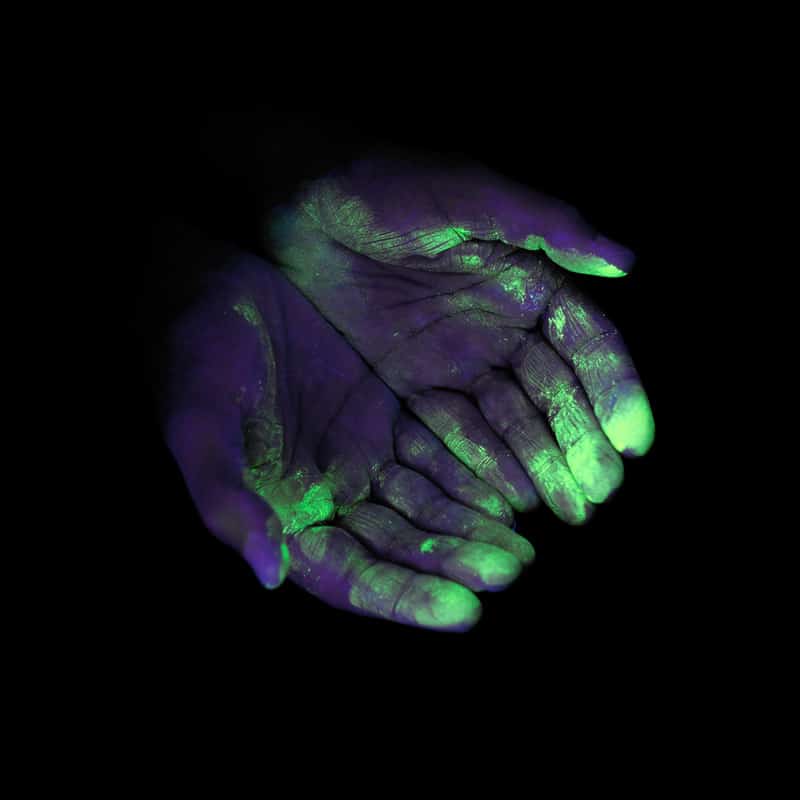
Now you can see just how easily cross contamination of bacteria can occur and how vigilant you must be to prevent it from happening!
However, if you practice good hygiene and safe food handling practices, the risk of cross contamination will be dramatically reduced, and you will minimise the risk of food poisoning yourself or someone else.
The cross contamination of food allergens happens in a similar way.
How Cross Contamination / Cross Contact of Food Allergens Happens in the Kitchen
If you are preparing food in your kitchen that may be an allergen to one of your guests such as peanuts or seafood, then every surface that comes into contact with those items will potentially have been contaminated. Hands, cutting boards, knives, utensils, pans etc.
Food allergens are becomming more common, and it can be lethal if a person with an allergy comes into contact with that product. Thankfully, many food products now come with allergen warnings to alert you to the fact there could be a potential problem.
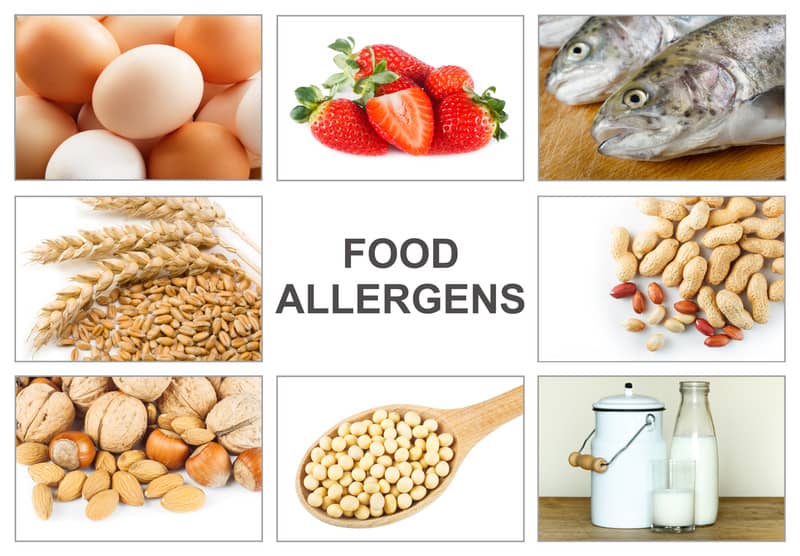
Here are some quick examples of how allergens could be transferred within the kitchen.
You are using peanuts in one of your dishes. You grab a handfull and toss them into the dish you are making. Now you turn your attention to the side salads and start to prepare the ingredients. If you haven’t thoroughly washed your hands, you could be transferring peanut oil to the salad and it may be enough to cause a reaction in someone who suffers from a peanut allergy.
If you cook something with peanut oil and then stir another dish with the same utensil, you may just have created a situation that could make someone very ill.
If you prepare a shrimp cocktail and use the same bowl or cutting board to prep another food item – cross contamination.
It is not enough just to wipe clean a surface or utensil before using again, they must be thoroughly washed with hot soapy water between uses.
If you are making a dish and you accidently put in an ingredient that is an allergen, don’t just pick the ingredient back out. Eg: Walnuts in a salad. Any part of the salad that the walnuts came into contact with could potentially trigger an allergic reation. Sometimes it only takes the tiniest amount to cause a reaction.
By now you should be getting a bit more of an idea as to how cross contamination or cross contact works.
Although cross contamination is a very real threat within the kitchen, you will be pleased to know that there are easy steps that you can take to avoid most situations.
How to Prevent Cross Contamination of Bacteria in the Kitchen
It all sounds very scary when we start talking about people getting sick with food poisoning, and you may feel like you never want to step foot in your kitchen again.
Please be assured that by following a few simple hygiene procedures, you can greatly reduce the chances of anything happening.
Let’s take a look at how you can minimise the risk of cross contamination in your kitchen.
Segregate When Shopping
When you go shopping for your groceries, take separate bags to carry your meat and seafood home as bacteria may be present on the packaging through leakage or handling.
It is handy to keep a packet of anti bacteria wipes in your bag or pocket so that you can wipe your hands after handling products on the raw meat and fish departments. This prevents any cross contamination of bacteria to products you handle after selecting your meat and fish.
Bacteria can also be found on certain vegetables due to the soil. If you are getting fresh vegetables that still show evidence of soil, such as carrots, then these should be bagged and kept separate from other foods.
Safe Food Storage
Ensure that when you put raw meat or fish into your refrigerator that it is contained in a sealed bag or covered container and placed on the bottom shelf. This prevents any juices dripping onto other food if the packaging leaks. Wash your hands thoroughly with hot soapy water for at least 20 seconds after handling the raw meat or fish packaging. This again will help prevent the spread of possible bacteria to the other groceries you have to put away.
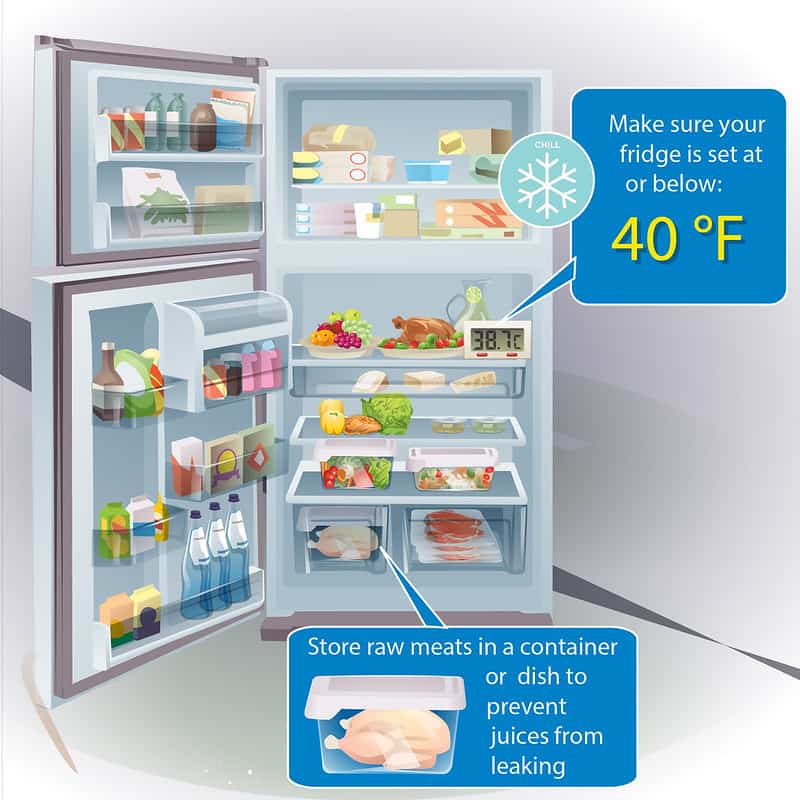
Likewise with the vegetables that have soil. Try to keep separate and prevent any soil contaminating kitchen surfaces etc. Wash your hands thoroughly after handling.
Safe Food Handling
Whenever you handle raw meat or fish, it is vital that you try to limit the amount of contact it has with other areas of the kitchen.
Always use separate cutting boards for these foods and ensure that they are thoroughly washed with hot soapy water after use. Do the same with any knives or utensils you have used to prep the meat or fish.
Restaurants and food establishments have color coded boards and utensils specifically to prevent the risk of cross contamination.
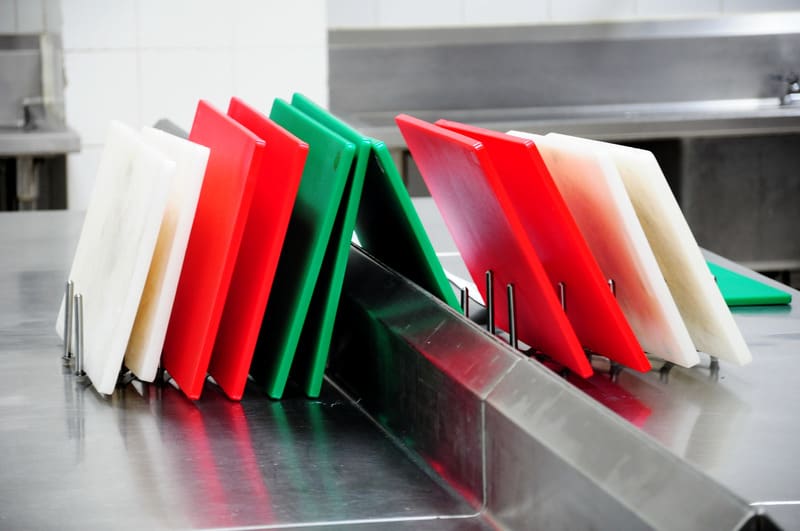
Try to pay attention to the surrounding area of where you are prepping the meat, and ensure that there are no high risk foods* nearby that may get inadvetantly contaminated with meat juices.
*High Risk Foods are foods that are ready to eat and require no further action before being consumed. For example: Sanwiches, Salads, Cooked Meats, Cakes & Pastries, Cookies etc. Any bacteria that gets onto these foods will be directly ingested by the person eating the food.
Adopt Good Hygiene Practices
- Hopefully you already wash your hands after every trip to the bathroom, but here are a few more ways that your hygiene standards can lower the risk of cross contamination.
- Wash your hands thoroughly with anti bacterial soap and hot water before you start to prep any food. Don’t just rinse your hands under the tap for a few seconds and think that is good enough – it’s not!
- Do the same 20 second thorough wash after touching any raw meats, fish or soiled vegetables. Use a paper towel to turn off the faucet to prevent bacteria from the faucet getting back onto your clean hands. Better still, get into the habit of using a soapy cloth to wipe the faucets as you wash your hands.
- Thoroughly wash any kitchen boards, utensils, bowls and containers that have been used for raw foods with hot soapy water. Have a sink or bowl of hot soapy water ready for when you finish prepping so that you can wash the items straight away and avoid having contaminated dishes around your workspace. “Clean as you go” is a saying that works well in the kitchen environment.
- Wash down worktops and surfaces using a clean cloth and clean hot soapy water. Finish by spraying the surfaces with a household antibacterial spray.
- Always keep ready to eat foods covered and away from your raw food prep area. If you have already prepared food that is ready to eat, completely remove it from any areas of the kitchen that you may be dealing with raw meat, fish or soil covered vegetables. This will eliminate the risk of those food accidently being contaminated.
- Thoroughly wash and anti bacterial spray the storage areas that held the raw meat, fish or vegetables. Take the time to thoroughly was and wipe the shelf in the refrigerator that held the raw meat. This will clean up any possible leakage or bacteria that may have been present on the packaging and is now on the shelf. Also clean any vegetable racking that was used.
How To Avoid Cross Contamination / Cross Contactof Allergens in the Kitchen
Quite simply, following the same principles for preventing the cross contamination of bacteria will help reduce the cross contamination / cross contactof allergens. Here are a couple of added steps you can take.
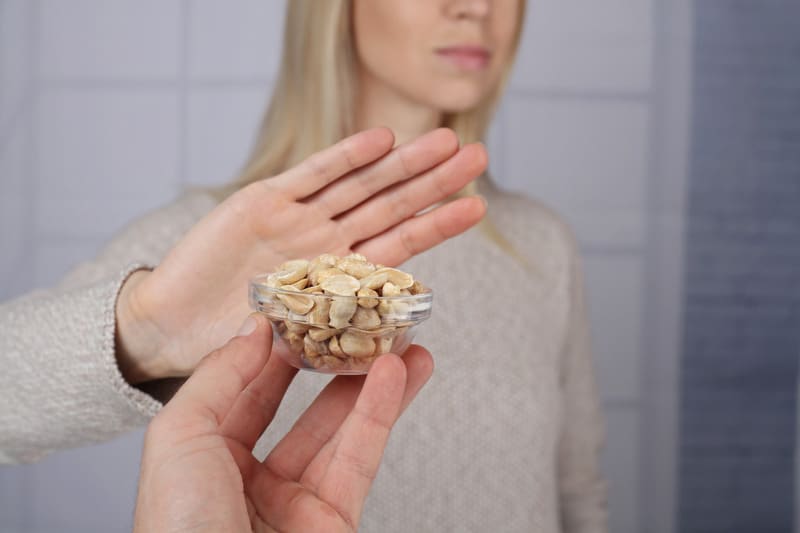
- Ask your guests if they have any allergens or food intolerances prior to setting your menu. Simply asking the people you plan on feeding if they have any issues with certain foods can help you prevent even bringing those foods ino your kitchen. Better to change your menu and keep everyone safe, than take the risk of cross contamination.
- Read the Allergen Advice label of any foods you are preparing. If you are not making everything from scratch and so can categorically say what is in your food, read the ingredients label of any pre prepared food you are using. Due to the high increase of modern day allergies and intolerences, most food manufacturers now list any allergens used within the product.
- Don’t just remove allergen items from the dish. This was metioned earlier but it’s worth repeating. If you accidently add an allergen product to the dish you are making, it is not enough just to remove it again. Once the item has been added, it has potentially contaminated the whole dish and could trigger an allergic reaction if eaten by the person with the allergy. With some people, their allergies are so sensitive even the air in which the food was prepared can trigger a reaction. PLEASE DON’T take chances where allergies are concerned.
Toxin Cross Contamination Within the Kitchen
Lastly we will just touch on toxin contamination.
Toxin contamination is when a toxic or poisonous substance comes into contact with your food such as cleaning products, chemicals or rat poisons etc.
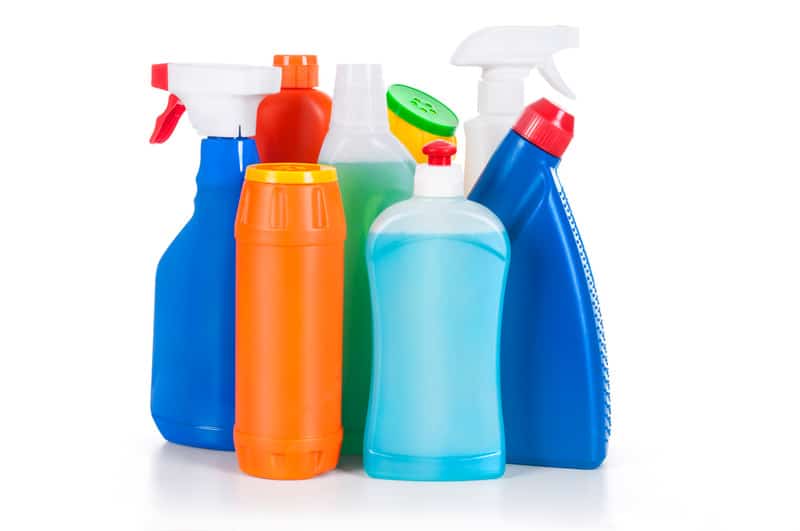
This type of contamination is not common, but you should be aware of it.
Common sense is really all that is needed here, but just to be sure, here are some tips for preventing toxin cross contamination.
- Store all cleaning products, chemicals etc away from food storage areas
- Thoroughly wash your hands after touching any cleaning products, chemicals, poisons etc.
- Thoroughly wash down any worktops or kitchen surfaces that have come into contact with toxic products
- Ensure all toxic containers are clearly labelled, have tight fitting lids and show no signs of leakage.
- Keep all toxic products separate from your groceries when shopping.
A Final Word About Cross Contamination
Having read this post you may be a little aprehensive about ever stepping in your kitchen to prepare food again. Please don’t overthink this.
As you can see, much of what has been mentioned is common sense, and you are probably doing most of the procedures already.
If you usually clean as you go, wash your hands and store your food correctly, then you will have very little to worry about.
Giving a little thought to how you work in the kitchen, and keeping ready to eat foods away from raw meats, seafood and dirty vegetables, you should never have a problem.
Develop a routine of good hygiene practices, use them every time you step into the kitchen, and you can continue to safely feed the masses without fear of any of them getting sick!
